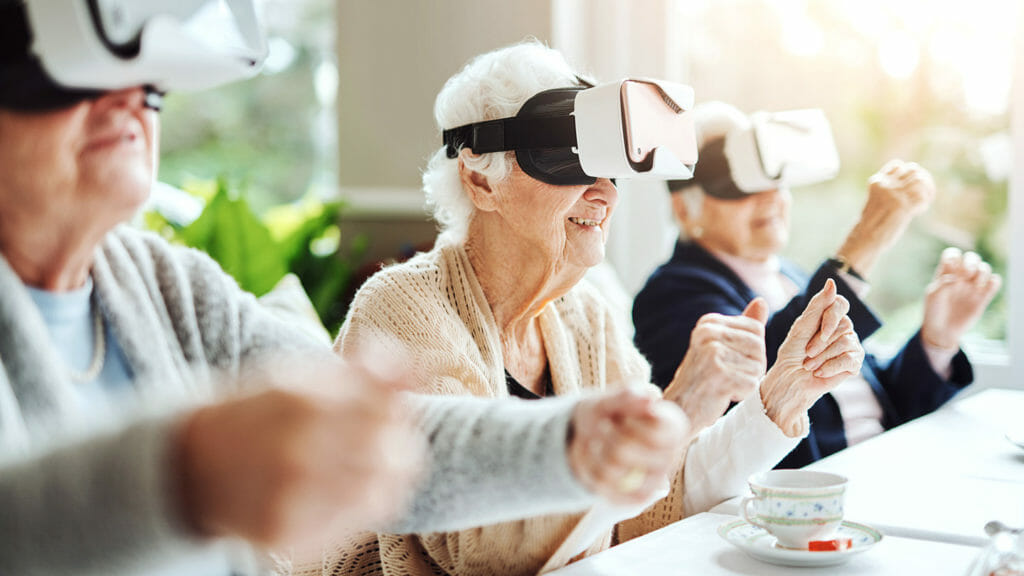
Using digital technology to train healthcare professionals such as nurses goes beyond virtual reality, a new white paper explains.
The broader category of “extended reality,” or XR, includes not just new VR tools, but also augmented reality and “mixed” reality processes.
Current and future XR options open up new avenues for training providers at a time when senior living and care operators are facing an ongoing labor shortage.
More than 90% of healthcare professionals polled in a new study said they agreed that XR tools improved educational programs, and 75% said that using this tech allowed trainees to complete such programs in less time.
Even among healthcare organizations that have not adopted some component of XR, 86% say they hope to incorporate those training options by 2026, the researchers found.
Although the white paper itself does not mention long-term care, the authors do note the rapidly aging population in the United States and elsewhere, and the growing need to make there are sufficient healthcare services available to meet their needs.
THE HTC VIVE team interviewed more than 400 healthcare professionals to evaluate the current state of opinions, and adoption, of XR technologies, the white paper noted.
Despite the statistics showing widespread support, it was important to address latent skepticism for new technology, said Pearly Chen, HTC VIVE’s vice president of business development and partnerships.
“XR feels new, and possibly technical, so it’s understandable to feel intimidated to adopt such tech into a healthcare environment,” Chen said in a recent interview. “VR was also perceived in the past to be for gaming. It’s more than that. It’s the next evolution of how we interact in our digital life.”


